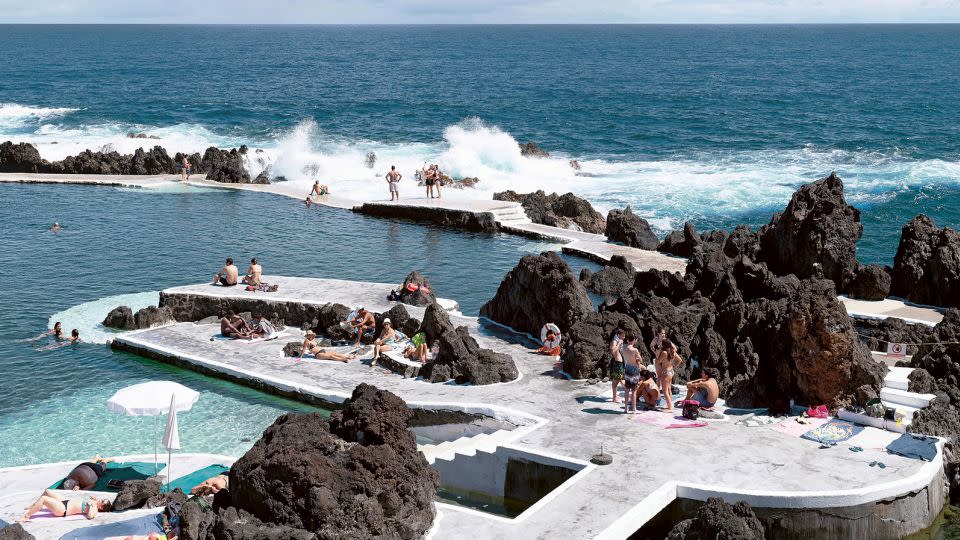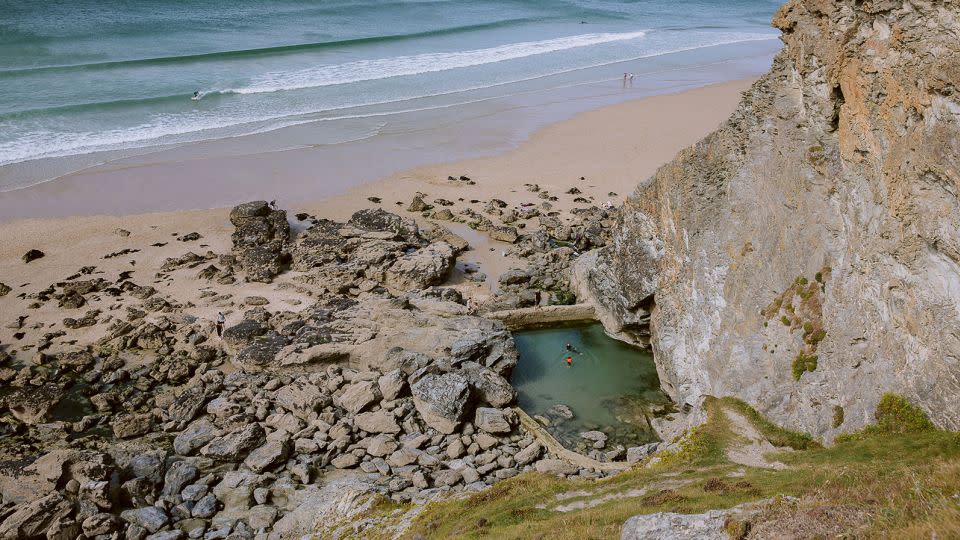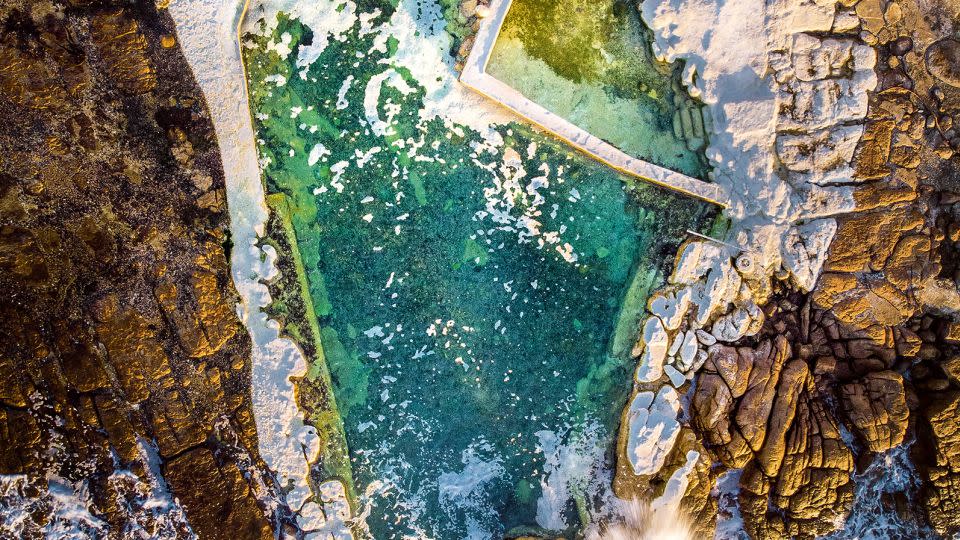The world’s most dramatic saltwater ‘sea pools’
Found on coastlines around the world, man-made “sea pools” are designed to offer swimmers a safe haven from the dangers of rough waters and unpredictable currents. From Australia’s 82-foot beachside Avalon Rock Pool to the “Mermaid Pool” in Cornwall, UK, they can provide a serene saltwater oasis against a backdrop of crashing ocean waves.
For London-based author and outdoor swimming enthusiast Chris Romer-Lee, whose new book features photographs of more than 60 dramatic sea pools, their appeal is not just aesthetic — he finds himself drawn to the sense of security they provide.
“The photos I particularly like are the ones (taken) on stormy days, where you really get the feeling of being cradled in nature,” he told CNN in a video interview.
His book, which includes essays from designers and fellow outdoor swimmers, features a variety of pools from all over the globe. It also delves into the architecture and history of sea pools, from the 19th century onwards.
Passion project
Romer-Lee’s fascination with sea pools was sparked during a family vacation in Switzerland a decade ago. Inspired by his experience swimming in Lake Zurich — where he encountered Zürichsee Kreisel, a swimming facility built along the lake and River Limmat — he founded Thames Baths, an organization campaigning to build a floating pool on London’s River Thames.
Studio Octopi, the architecture practice he co-founded, also channels his passion, having restored tidal pools in Scotland and designed a seawater pool in Cumbria in recent years.
To research his book, Romer-Lee spent “hours and hours” on Google Maps, scanning coastlines across the world to locate the best examples of sea pools. (“That was the most productive way of finding them,” he said.)
He then approached, via Instagram, photographers who had previously shot the locations. Many of them were locals, and Romer-Lee said he “liked the idea of giving some exposure to less well-known photographers or those starting out.”

The resulting images reveal an incredible mix of forms, from Ireland’s calm Belmullet Tidal Pool, which is described in the book as “more akin to an art installation,” to Portugal’s rocky Piscinas Naturais de Porto Moniz, which originated from the cooling and solidification of Madeira’s volcanic lava in over thousands of years. (In 1940, the fragmented pools were consolidated into a single entity with the construction of a concrete sea wall.)
The photos’ color and composition often add to the sense of awe — such as images of Pozo De Las Calcosas, in Spain’s Canary Islands, an off-the-beaten-path pool, accessed via a meandering volcanic cobblestone path, whose waters shine out against the dark jagged shoreline.
“The colors are just immense,” Romer-Lee said. “You’ve got angry Atlantic water washing up this volcanic coastline, and the pool is just scooped out of the lava field. Then you’ve got this flat, clean, amazing azure-green type color of the tidal pool.”
The Salt Rock tidal pool, in South Africa’s KwaZulu-Natal province, meanwhile, appears neatly trimmed by the white seafoam produced by rough waves hitting the neighboring rocks. “It’s just completely tranquil and calm,” the author said. “You wouldn’t be able to get into the sea under those sorts of conditions, which is exactly why they built these pools.”

The Trinkie and North Baths in Scotland are, along with Lewinnick Cove House Pool and Lady Basset’s Baths in Cornwall, also among Romer-Lee’s favorites entries in the book. All were captured in cold January, with snow lending one of the photographs an especially striking atmosphere.
Natural ‘treasures’
Elsewhere, the book highlights ambitious engineering and “wonderfully flamboyant and excessive” designs, like Wooley’s Pool in Cape Town, South Africa, with its white-painted rocks. The white zinc paint prevents the rocks from becoming slippery, while also giving them a dramatic, aesthetically pleasing appearance.
But Romer-Lee also expressed concern that the paint may hinder seaweed from attaching to the rocks, thus affecting the ecosystem. “A good pool is one that has man and animals living in harmony,” he said.

With heated indoor pools reportedly facing closure across the UK, and elsewhere, amid surging energy prices, outdoor swimming appears to be enjoying a resurgence, said Romer-Lee, who spends every morning swimming in the open-air Serpentine Lake in London’s Hyde Park. He hopes his book can draw attention to the many accessible, safe but often-overlooked pools found on shorelines around the world.
“Let’s not forget these treasures and what they do for us, and respect them as we do the rest of the sea,” he said. “There’s something really important about these pools within the larger swimming lexicon.”
“Sea Pools: 66 Saltwater Sanctuaries From Around the World,” published by Batsford, is available August 3.
For more CNN news and newsletters create an account at CNN.com